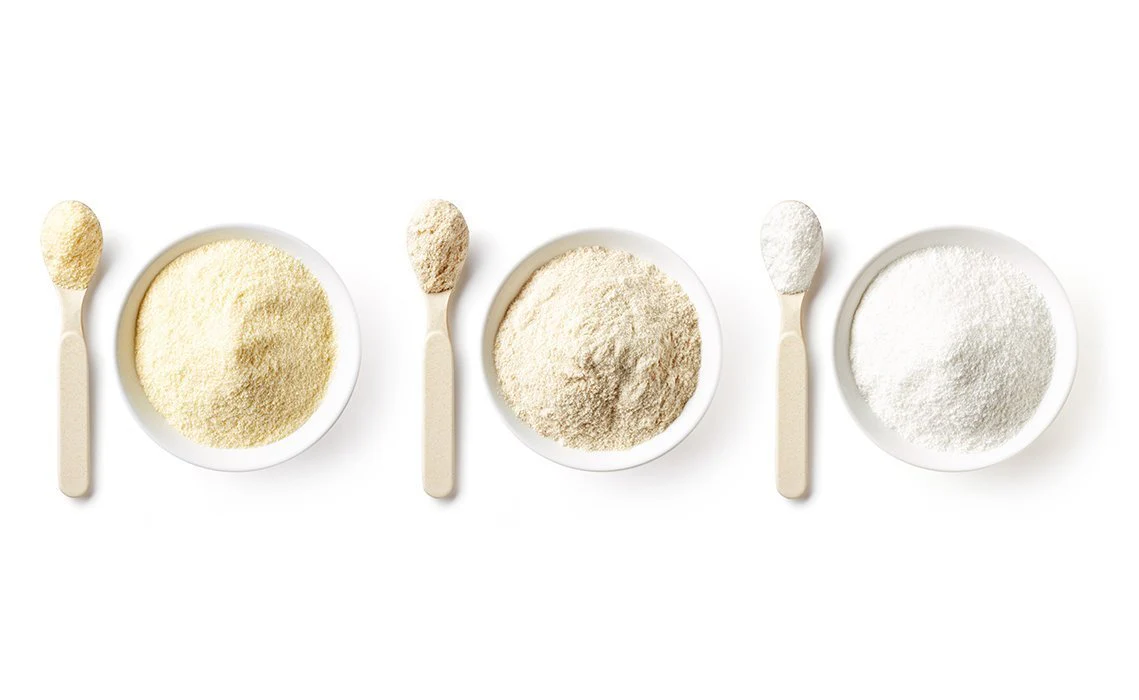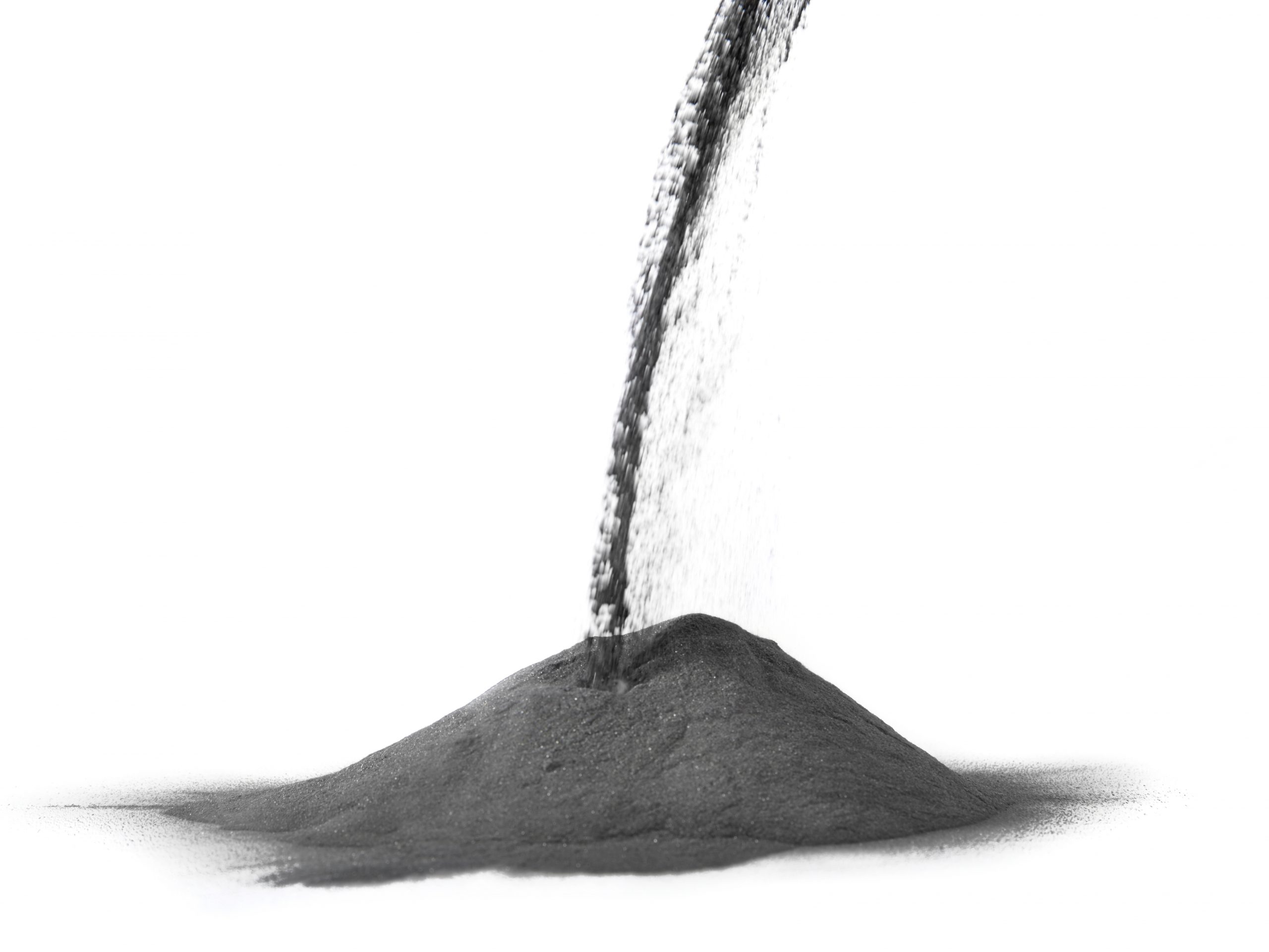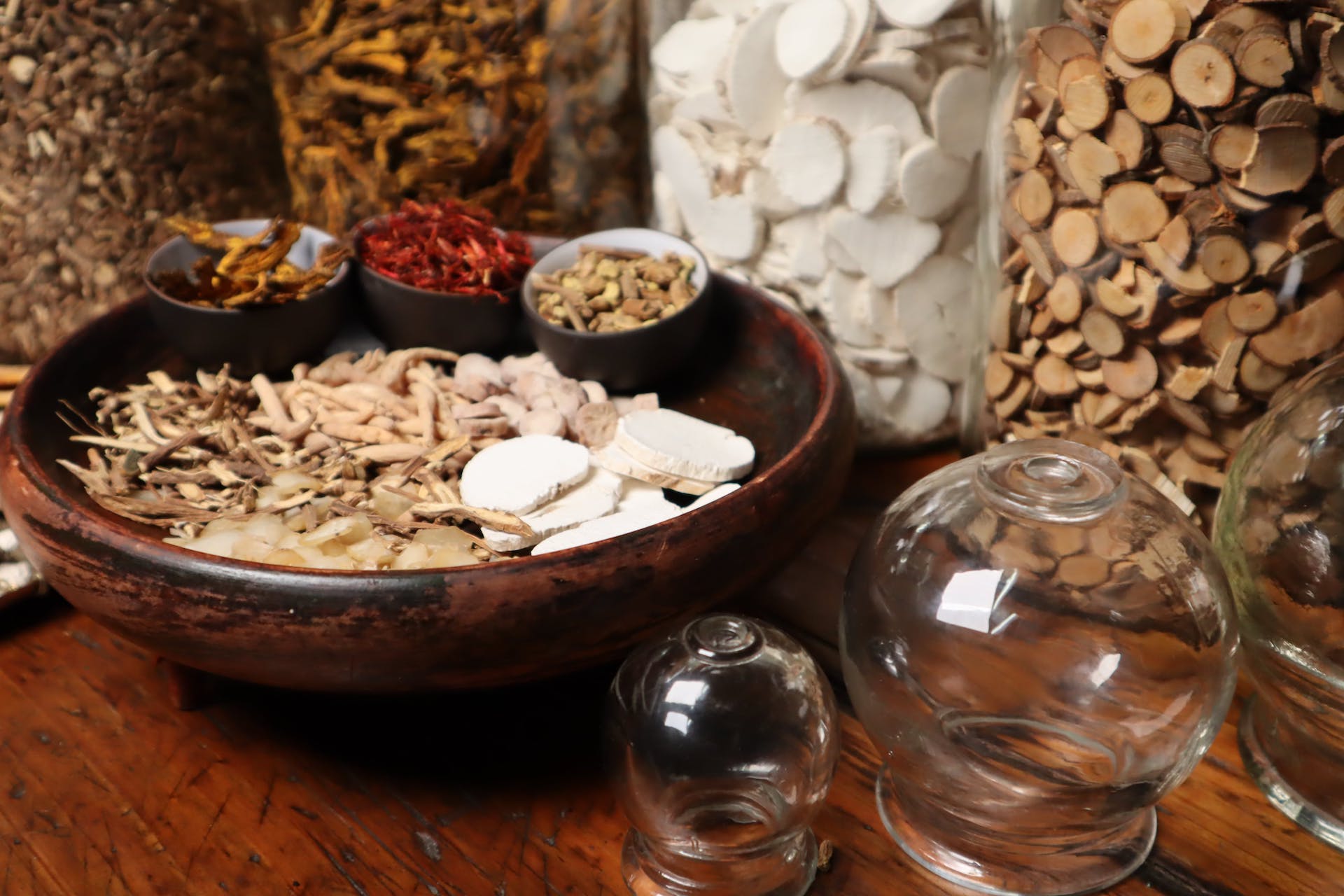Dolomite Grinding Technology and Equipment
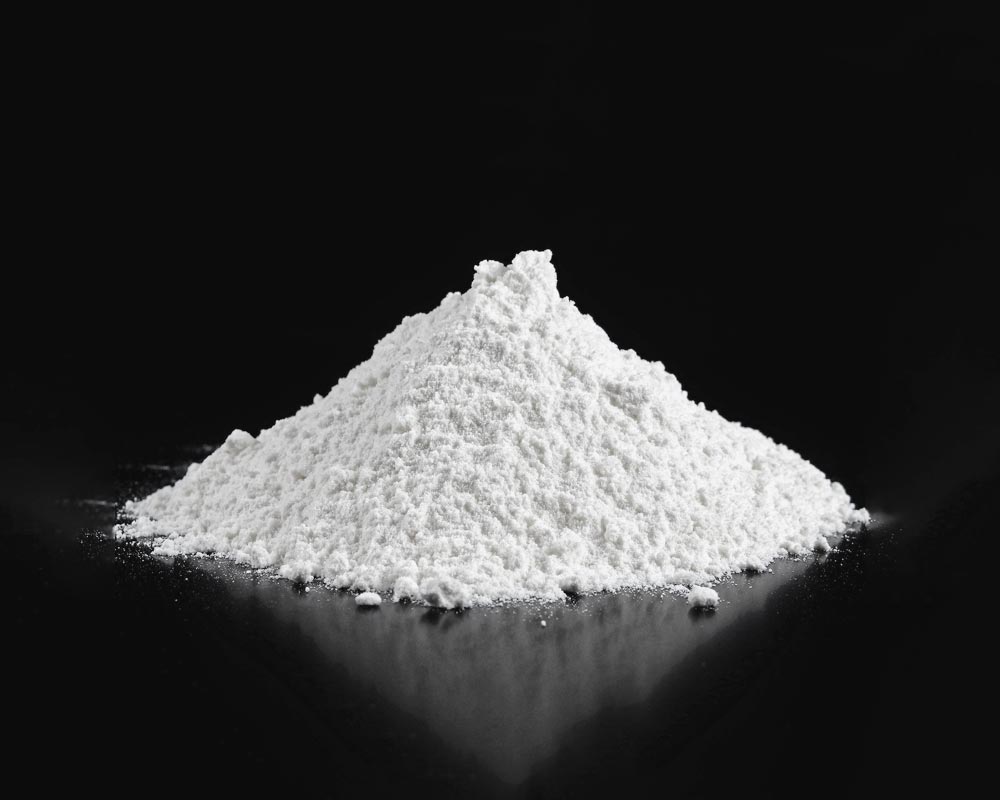
1. In the field of building materials, ground dolomite can be used as a high-quality filler for the production of artificial marble, ceramics, etc. Its powder can improve the physical properties of the material, such as increasing hardness and wear resistance.
2. In the metallurgical industry, dolomite powder can be used as a flux. It helps to lower the melting point of the ore, promote the smelting process of the metal, and improve the smelting efficiency.
3. In agriculture, processed dolomite powder can be used as a soil conditioner. It can adjust the pH of the soil and provide nutrients such as calcium and magnesium for plant growth. It is especially suitable for acidic soil and is conducive to improving soil fertility.
Dolomite grinding process
1. Crushing and screening: crush the dolomite ore to make its particle size meet the requirements of the grinding equipment. Then the crushed material is graded by screening equipment to remove oversized or undersized particles.
2. Grinding: send the graded dolomite particles into the grinding mill for grinding. Commonly used grinding equipment includes vertical mill, European mill, superfine mill, etc.
3. Grading and separation: the ground powder is graded and separated again by grading equipment to ensure that powders of different particle sizes can be accurately separated.
4. Packaging and transportation: the final dolomite powder is packaged according to the purpose for transportation and application.
In actual production, the specific process flow may vary due to factors such as equipment selection, production scale, and product requirements.
In terms of industrial applications, dolomite and its series of products have broad application prospects. Common dolomite products on the market include dolomite ore of different particle sizes, dolomite sand (6-10 mesh, 10-20 mesh, 20-40 mesh, 40-80 mesh, 80-120 mesh) and dolomite powder (10 mesh through, dolomite ultrafine powder 140 mesh, 325 mesh, 600 mesh, 1000 mesh, 1600 mesh), etc.
The equipment of dolomite ultrafine stone grinding machine includes crusher, bucket elevator, storage bin, vibrating feeder, micro powder grinding host, frequency conversion classifier, double cyclone powder collector, pulse dust removal system, high pressure fan, air compressor, electrical control system, etc.
9 standards for using talcum powder in plastics
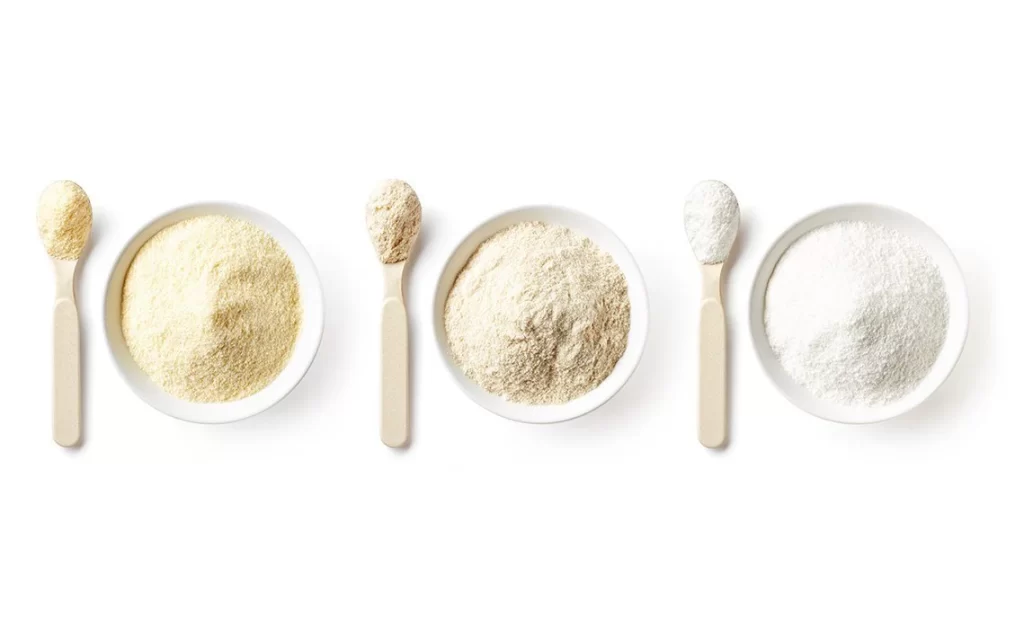
Talc is named for its soft texture and strong greasy feeling. It is a hydrated magnesium silicate mineral with a layered structure, mainly containing magnesium silicate, aluminum oxide, nickel oxide, etc.
Talc has excellent physical and chemical properties such as lubricity, anti-stickiness, flow aid, fire resistance, acid resistance, insulation, high melting point, chemical inactivity, good hiding power, softness, good gloss, strong adsorption, etc. It is widely used in coatings, paints, plastics, papermaking, ceramics, cosmetics, medicines, food, daily necessities and other industries.
Talc is one of the most widely used inorganic powders in plastic products. The characteristic of talc in plastic products is that it can significantly improve certain properties of plastic products. Therefore, when choosing talc, the following requirements should also be met for talc.
High purity
The higher the purity of talc, the better its reinforcing effect. Among other mineral impurities in talc, metal minerals (especially iron) have a very obvious effect on the anti-aging property of plastics.
Structure
Talc is usually in the form of dense blocks, leaves, radials, and fibers. Since the crystal structure of talc is layered, it has a tendency to split into scales and has special lubricity.
High-quality ultra-fine talcum powder has a flaky structure. When used in plastic products, it can be evenly dispersed in the resin in a layered manner, and has good compatibility and complementarity of mechanical properties with the resin.
Wet whiteness and hue
After talcum powder and plastic are mixed, the color of the plastic changes more or less. Dark plastic products do not have too high requirements for the whiteness of the added talcum powder. However, in order to make light-colored products have better colors, talcum powder must have a higher wet whiteness and a suitable hue.
Silicon dioxide content
The silicon (SiO2) content in talcum powder is an important indicator for measuring the grade of talcum powder. The higher the silicon content in talcum powder, the higher the purity of talcum powder, the better the application effect, and the higher the price.
Customers need to choose talcum powder according to the performance requirements of different plastic products. For example, the silicon content of talcum powder added to agricultural film should be higher, the particle size should be small, and the particle size distribution should be narrow, so that the light transmittance of the film is good, and the tensile strength and puncture resistance of the film are improved.
For talcum powder used in injection molding, plates, and rods, the silicon content requirement does not need to be too high. Products with lower silicon content are not only cheaper, but also can improve the hardness and impact strength of plastic products.
Color
The colors of unprocessed talcum powder ore are different from each other, which can be white, gray, light red, pink, light blue, light green and other colors. Talc powder also has a special silver-like or pearl-like color and has different degrees of solid luster. This color can improve the appearance and visual effect of the product.
Surface properties
Talc powder presents different surface properties depending on its source. The specific surface area and oil absorption rate are largely determined by the mineral resources and product fineness. Other factors affecting these properties are surface roughness, particle shape and pore volume. The large specific surface area and appearance structure of talcum powder will not only affect the dosage of additives, but also promote the bonding force between resin structures, thereby improving the physical properties of plastic products.
Moisture
The structural morphology of talcum powder determines its characteristics. Although talcum powder is hydrophobic, due to the irregularity of the edge of its particle shape, it contains both structural water and crystal water. Therefore, the moisture content of talcum powder is greater than that of calcium carbonate. Moisture can easily affect the performance of plastics, so the removal of moisture from talcum powder and the drying process should be highly valued.
Static electricity
Talc powder has a layered structure and a large specific surface area. The irregular shape of the particles and the convex and concave shape of the surface make it have a large friction factor and easy to generate static electricity, which makes it difficult to disperse the agglomeration between tiny particles and affects the application effect.
Flowability
During the extrusion process, the flaky structure of talcum powder has poor fluidity and difficulty in dispersion than other granular inorganic materials, and the main screw torque is large, so better activation and coating is the key to overcoming these problems.
Boron Nitride Applications in Health
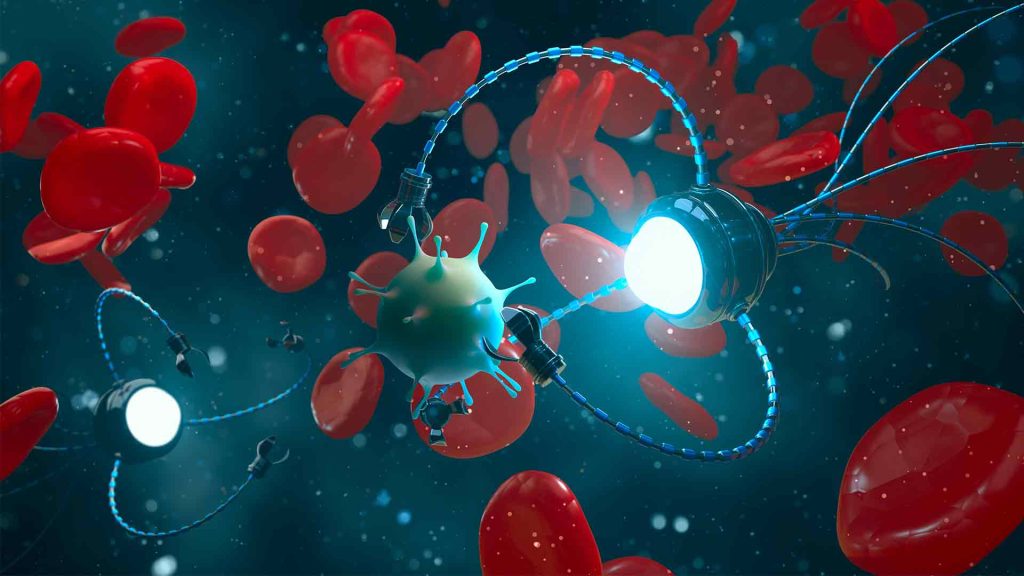
Boron nitride is a layered molecular crystal with a hexagonal regular network structure composed of the third main group element boron and the fifth main group element nitrogen. In the molecular crystal layer, boron atoms and nitrogen atoms are combined by coordination bonds, and the coordination bond binding force is very strong, so the B atoms and N atoms in the layer are tightly bound. The layers are connected by molecular bonds. Since the molecular bonds are weak, it is very easy to fall off between the layers.
According to the different crystal forms, the crystal structure of boron nitride can be mainly divided into four types: hexagonal boron nitride (h-BN), cubic boron nitride (c-BN), wurtzite boron nitride (w-BN) and rhombohedral boron nitride (r-BN). Among them, hexagonal boron nitride (h-BN) is the most widely used.
Application of Boron Nitride in the Biomedical Field
BN has good biocompatibility in vitro and in vivo, and has similar or even superior properties of graphene-based materials in biological applications. It can be used in antibacterial, drug delivery, boron delivery agent, tissue engineering, in vivo imaging and other fields.
(1) Antibacterial
Recently, some studies have found that boron nitride nanosheets have effective antibacterial effects on antimicrobial resistance (AMR) bacteria, and have good biocompatibility in the body without causing secondary drug resistance during long-term use.
(2) Drug delivery
h-BN is also considered to be a promising drug carrier. Hexagonal boron nitride nanosheets (BNNSs) were synthesized in large quantities at one time by the salt template method, and effectively inhibited the proliferation of breast cancer in in vivo and in vitro experiments, indicating the potential of BNNSs in drug delivery applications. Some studies have found that using spherical BN as a carrier, deoxyribonucleic acid-loaded brain natriuretic peptide penetrates into tumorous IAR-6-1 cells through the endocytosis pathway, and then releases DOX into the cytoplasm and nucleus, thereby targeting and killing cancer cells.
(3) Tissue engineering
In the field of dental materials, BNNs were prepared by high-energy ball milling and dispersed in a zirconia matrix, and the composite powder was consolidated by plasma sintering. Zirconia with added BNNs showed a strength of up to 27.3% and a fracture toughness of 37.5%, and inhibited the degradation of the zirconia matrix in a humid environment, demonstrating the potential value of BNNs as a dental material reinforcement.
(4) Boron delivery agent
Due to its high boron content and low cytotoxicity, Boron nitride nanomaterials can be used as boron delivery agents for boron neutron capture therapy (BNCT). BNCT is a new type of specific radiation cancer treatment that can target and kill cancer cells without harming normal cells. Boron nitride nanotubes modified with polyethylene glycol have been shown to be boron delivery agents for BNCT. The boron accumulation in B16 melanoma cells is about three times that of the second-generation boron delivery agent BSH (disodium thiododecaborane). Boron nitride nanotubes modified with polylysine and folic acid are selectively taken up by glioblastoma multiforme cells after coupling with fluorescent quantum dots. They can not only be used as boron delivery agents for BNCT, but also can trace the intracellular behavior of drugs. Boron nitride nanospheres have also been reported to be a high-quality boron reservoir for the treatment of prostate cancer. Boron nitride with controllable crystallinity can continuously release boron, thereby reducing the activity of prostate cancer cells and inducing cell apoptosis. The in situ tumor model confirmed the in vivo anti-cancer efficacy of hollow boron nitride spheres.
Spherical Silica Powder Production
![]()
Spherical silicon powder has relatively high purity, very fine particles, good dielectric properties and thermal conductivity, and has the advantages of low expansion coefficient. It is widely used in large-scale integrated circuit packaging, aerospace, coatings, medicine and daily cosmetics, and is an irreplaceable important filler.
There are two methods for preparing spherical silicon micropowder: physical and chemical method and chemical method. The physical and chemical methods mainly include flame method, deflagration method, high temperature melt spray method, plasma method and self-propagating low temperature combustion method. The chemical method mainly includes gas phase method, liquid phase method (sol-gel method, precipitation method, microemulsion method), chemical synthesis method, etc.
In the production process of spherical silicon micropowder, strict control of each production link is the key to ensure that the product quality meets the standards.
The main raw material of spherical silicon micropowder is angular molten or crystalline silicon micropowder.
Stability of raw materials
The raw materials used to produce spherical silicon micropowder are preferably angular silicon micropowder processed from the same ore vein and the same production process, so as to maximize the uniformity of the raw materials and ensure that the products with high spheroidization rate are produced under the condition that the spheroidization temperature, gas supply, feed amount, pressure, flow rate and other factors remain unchanged.
The physical and chemical indicators of the raw materials should be controlled within a certain range
The physical and chemical indicators of the raw materials fluctuate too much, which will not only affect the spheroidization temperature, but also affect the dispersion of the spheres.
Raw material particle size and particle size distribution
Different particle sizes have different heating areas, and their passivation temperature points after heating are also different.
Raw material particle dispersibility
During the processing of angular silicon micropowder, especially ultrafine angular silicon micropowder, secondary agglomeration of powder often occurs due to the increase of surface energy.
Moisture content of raw materials
If the angular silicon micropowder used as the raw material of spherical silicon micropowder is affected by factors such as improper protection, too long storage time, and excessive environmental humidity, it will cause the powder to absorb moisture, have high moisture content, and agglomerate, which will also affect the spheroidization effect of spherical silicon micropowder.
Radioactive elements in raw materials should be low
For the raw materials for producing low-radiation spherical silicon micropowder, only when the radiation elements themselves (such as uranium U, thorium Th, etc.) are very low can the products produced meet the requirements of low-radiation spherical silicon micropowder.
There are two links in the surface modification of spherical silicon micropowder. One is to disperse the secondary agglomerated particles of spherical silicon micropowder raw materials - angular silicon micropowder, especially ultrafine angular silicon micropowder, and first perform surface activation treatment to disperse the particles before sphericalization. This requires that the surface dispersant used must be completely volatilized at high temperature, otherwise it will cause carbon deposits in the spherical silicon micropowder, affecting product quality.
The second is the late modification of spherical silicon micropowder. When silicon micropowder is used as an inorganic filler and mixed with organic resin, there are problems of poor compatibility and difficulty in dispersion, which leads to poor heat resistance and moisture resistance of materials such as integrated circuit packaging and substrates, thereby affecting the reliability and stability of the product. In order to improve the problem of interface bonding between silicon micropowder and organic polymer materials and improve its application performance, it is generally necessary to modify the surface of silicon micropowder.
The key to efficient powder modification
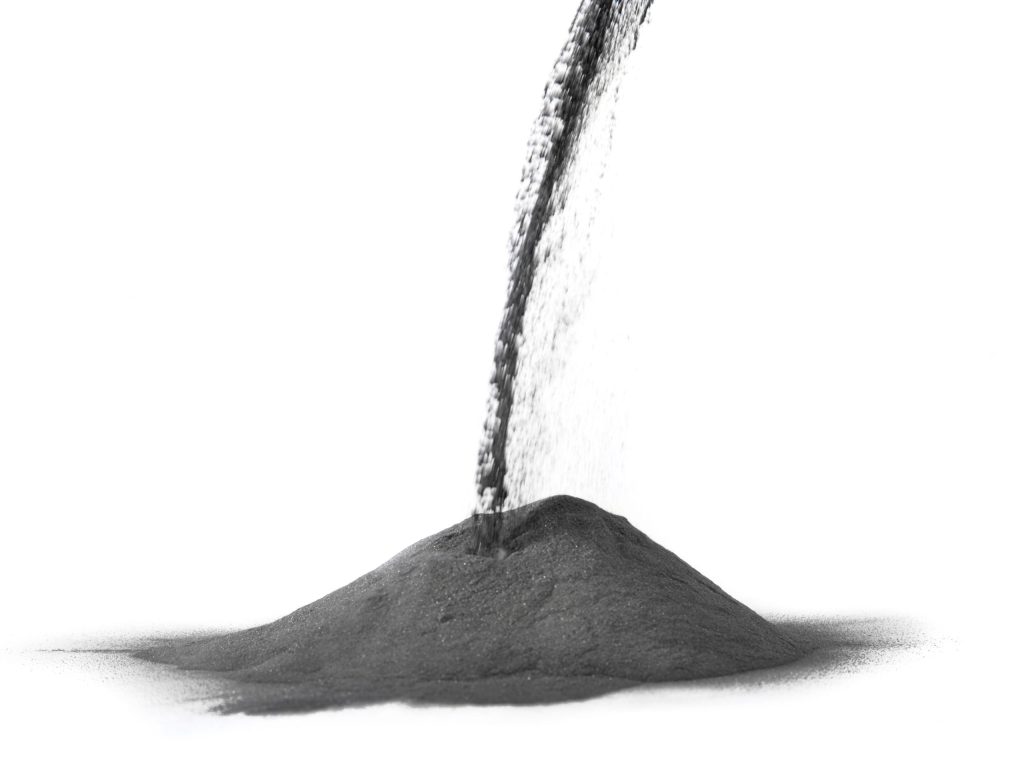
Powder surface modification, also known as surface modification, surface treatment, etc., refers to the use of certain methods (physical, chemical or mechanical, etc.) to treat, modify and process the surface of particles, and purposefully change the physical and chemical properties of the powder surface to meet the requirements of powder processing and application. Therefore, understanding the physical and chemical properties of powders is crucial to effectively change these properties of the powder surface to achieve efficient powder modification.
Specific surface area
The specific surface area of powder materials is related to their particle size, particle size distribution and porosity. For powder materials, the specific surface area is related to the particle size. The finer the particle, the larger the specific surface area; it is related to the roughness of the particle surface. The rougher the surface, the larger the specific surface area; it is greatly related to the pores on the particle surface. The specific surface area of porous powder increases sharply. The specific surface area of powder materials with developed micropores can be as high as several thousand square meters per gram.
Specific surface area is one of the most important surface properties of powder materials and one of the main bases for determining the amount of surface modifier. The amount of surface modifier is related to the specific surface area of the powder. The larger the specific surface area, the more surface modifier is required to achieve the same coverage rate.
Surface energy
The surface energy of the powder is related to its structure, the bond type and bonding force between atoms, the number of surface atoms and the surface functional groups. After the material is crushed, a new surface is generated, and part of the mechanical energy is converted into the surface energy of the new surface. Generally speaking, the higher the surface energy of the powder, the more it tends to agglomerate, and the stronger the water absorption and adhesion.
Surface wettability
The wettability or hydrophobicity of the surface of inorganic powder is one of the important surface properties of fillers for polymer-based composite materials such as plastics, rubbers, adhesives, and fillers or pigments for oily coatings.
Surface adsorption characteristics
When molecules (or atoms) in the gas phase or liquid phase collide with the surface of the powder, the interaction between them causes some molecules (atoms, ions) to remain on the surface of the powder, causing the concentration of these molecules (or atoms, ions) on the surface of the powder to be greater than that in the gas phase or liquid phase. This phenomenon is called adsorption. Powders are usually called adsorbents, and the adsorbed substances are called adsorbates. The larger the specific surface area of the powder, the more significant the adsorption phenomenon.
Surface electrical properties
The electrical properties of the powder surface are determined by the charged ions on the powder surface, such as H+, 0H-, etc. The electrical properties of powder materials in solution are also related to the pH value of the solution and the type of ions in the solution. The charge and size of the powder surface affect the electrostatic forces between particles, between particles and surfactant molecules and other chemical substances, thus affecting the cohesion and dispersion characteristics between particles and the adsorption of surface modifiers on the particle surface.
Surface chemical properties
The chemical properties of the powder surface are related to the crystal structure, chemical composition, surface adsorbents, etc. of the powder material. It determines the adsorption and chemical reaction activity of the powder under certain conditions, as well as the surface electrical properties and wettability, etc. Therefore, it has an important influence on its application performance and the interaction with the surface modifier molecules. The chemical properties of the powder surface in the solution are also related to the pH value of the solution.
Silicon carbide ceramics: photovoltaic industry applications
![]()
Silicon carbide ceramics have good mechanical strength, thermal stability, high temperature resistance, oxidation resistance, thermal shock resistance and chemical corrosion resistance, and are widely used in hot fields such as metallurgy, machinery, new energy, building materials and chemicals. Its performance is also sufficient for the diffusion of TOPcon cells in photovoltaic manufacturing, LPCVD (low pressure chemical vapor deposition), PECVD (plasma chemical vapor deposition) and other thermal process links.
Compared with traditional quartz materials, boat supports, boats, and pipe fittings made of silicon carbide ceramic materials have higher strength, better thermal stability, no deformation at high temperatures, and a lifespan of more than 5 times that of quartz materials. They can significantly reduce the cost of use and the energy loss caused by maintenance and downtime. They have obvious cost advantages and a wide range of raw materials.
Among them, reaction bonded silicon carbide (RBSC) has low sintering temperature, low production cost, and high material densification. In particular, there is almost no volume shrinkage during the reaction sintering process. It is particularly suitable for the preparation of large-sized and complex-shaped structural parts. Therefore, it is most suitable for the production of large-sized and complex products such as boat supports, boats, cantilever paddles, furnace tubes, etc.
Silicon carbide boats also have great development prospects in the future. Regardless of the LPCVD process or the boron diffusion process, the life of the quartz boat is relatively low, and the thermal expansion coefficient of the quartz material is inconsistent with that of the silicon carbide material. Therefore, it is easy to have deviations in the process of matching with the silicon carbide boat holder at high temperature, which can lead to the boat shaking or even breaking. The silicon carbide boat adopts an integrated molding and overall processing process route. Its shape and position tolerance requirements are high, and it cooperates better with the silicon carbide boat holder. In addition, silicon carbide has high strength, and the boat breakage caused by human collision is much less than that of quartz boats.
The furnace tube is the main heat transfer component of the furnace, which plays a role in sealing and uniform heat transfer. Compared with quartz furnace tubes, silicon carbide furnace tubes have good thermal conductivity, uniform heating, and good thermal stability. The service life is more than 5 times that of quartz tubes. However, the manufacturing difficulty of silicon carbide furnace tubes is very high, and the yield rate is also very low. It is still in the research and development stage and has not yet been mass-produced.
In a comprehensive comparison, whether in terms of product performance or cost of use, silicon carbide ceramic materials have more advantages than quartz materials in certain aspects of the solar cell field. The application of silicon carbide ceramic materials in the photovoltaic industry has greatly helped photovoltaic companies reduce the investment cost of auxiliary materials and improve product quality and competitiveness. In the future, with the large-scale application of large-size silicon carbide furnace tubes, high-purity silicon carbide boats, and boat supports, and the continuous reduction in costs, the application of silicon carbide ceramic materials in the field of photovoltaic cells will become a key factor in improving the efficiency of light energy conversion and reducing industry costs in the photovoltaic power generation field, and will have an important impact on the development of photovoltaic new energy.
Application of Silicon Carbide in Photovoltaic Industry
![]()
With the increasing global energy demand, fossil energy, mainly oil, coal and natural gas, will eventually be exhausted. In addition, fossil energy will also cause serious environmental pollution during use. In order to solve the above problems, renewable energy such as solar energy, wind energy, hydropower and nuclear energy have attracted people's attention.
The main way to utilize solar energy is photovoltaic power generation. Compared with other power generation technologies, photovoltaic power generation has the advantages of being green and environmentally friendly, having sufficient solar energy resources, being safe and reliable in the power generation process, and being easy to install and transport power generation equipment. It is foreseeable that the large-scale promotion of photovoltaic power generation will have a positive impact on the governance of energy and environmental crises.
According to the principle of photovoltaic power generation, when sunlight shines on photovoltaic components (such as solar panels), photons interact with electrons in photovoltaic materials, causing electrons to escape from the materials and form photocurrent, which is direct current. Since most electrical equipment is powered by AC, the direct current generated by the photovoltaic array cannot be used directly, and it is necessary to convert the direct current into alternating current to achieve photovoltaic grid-connected power generation.
The key device to achieve the above purpose is the inverter, so the photovoltaic grid-connected inverter is the core of photovoltaic power generation technology, and the working efficiency of the inverter largely determines the utilization efficiency of solar energy.
Power devices are the core components of photovoltaic grid-connected inverters. Nowadays, various semiconductor devices used in the electrical industry are mostly based on silicon (Si) materials and have developed quite maturely. Si is a semiconductor material that is widely used in various electronic tubes and integrated circuits. As the use of power semiconductor devices becomes increasingly diverse, the use of silicon devices is restricted in some applications with high performance requirements and harsh working environments. This requires people to develop semiconductor devices with better performance. As a result, wide bandgap semiconductor devices such as silicon carbide (SiC) came into being.
Compared with silicon-based devices, silicon carbide devices exhibit a series of remarkable excellent properties:
(1) High breakdown electric field strength: The breakdown electric field strength of SiC is about 10 times that of Si, which makes SiC devices have higher blocking voltage and can work under higher electric field conditions, which helps to improve power density.
(2) Wide bandgap: SiC has a lower intrinsic carrier concentration at room temperature, which will lead to lower on-resistance in the on state.
(3) High saturation drift velocity: SiC has a higher electron saturation drift velocity, which helps it reach a steady state faster during the switching process and reduces energy loss during the switching process.
(4) High thermal conductivity: SiC has a higher thermal conductivity, which will significantly improve the power density, further simplify the design of the heat dissipation system, and effectively extend the device life.
In short, silicon carbide power devices provide the required low reverse recovery and fast switching characteristics to achieve "high conversion efficiency" and "low energy consumption" of photovoltaic inverters, which is crucial to improving the power density of photovoltaic inverters and further reducing the cost per kilowatt-hour.
Application of ultrafine grinding equipment in the field of traditional Chinese medicine
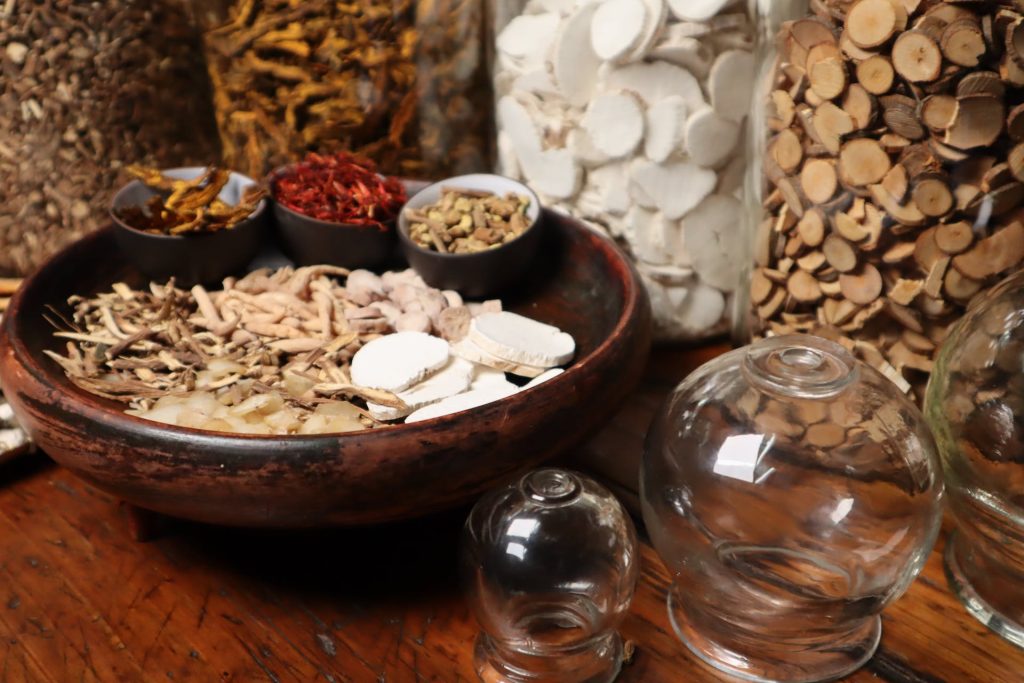
Ultrafine grinding technology can improve the extraction rate and bioavailability of traditional Chinese medicine, enhance the quality of traditional Chinese medicine preparations, and save resources. Traditional Chinese medicine can be further made into various dosage forms after ultrafine grinding, and has broad development prospects.
Ultrafine grinding technology is an advanced technology that uses mechanical or fluid dynamics to deagglomerate 0.5~5.0mm materials to micrometer or even nanometer levels. Compared with traditional grinding, it has the advantages of saving materials, fast grinding speed, and uniform and fine powder particle size.
Depending on the grinding media, ultrafine grinding technology is divided into dry and wet grinding. Dry grinding is to grind materials under dry conditions, which can produce ultrafine powders with good adsorption, expansion and water solubility; wet grinding is to grind (semi) fluid materials. Compared with dry grinding, it has the advantages of less dust hazard and less heat generation, and at the same time has homogenization and emulsification effects, making the product taste more delicate.
Based on the inherent properties of Chinese medicinal materials, Chinese medicinal ultrafine powder is mostly prepared by adding mechanical force. There are three common mechanical equipment.
Jet mill is also called fluid energy mill. The core components are nozzle and crushing chamber. The working principle is to use high-speed airflow or superheated steam as the impact carrier, spray it from the nozzle, provide energy for the fracture behavior of the material, cause the material crack to become unstable and open and expand under the action of external force, and the macroscopic manifestation is the change of material particle size. Jet mill with high-speed airflow as the impact carrier is often used for Chinese medicine crushing, which can be divided into the following 5 types: horizontal disc type, circulating tube type, opposite spray type, impact plate target type, fluidized bed type.
Jet mill is suitable for Chinese medicine with crisp texture, heat sensitivity and low melting point, but not for medicinal materials containing volatile components. The product after crushing has uniform particle size distribution, high classification accuracy, strong affinity, and retains the inherent properties of the particles. Therefore, this technology has become the preferred method for the development of various high-performance micropowder materials.
High-speed mechanical impact mill
The high-speed mechanical impact mill uses a rotor rotating at high speed around the axis to transfer momentum to the material, causing the material to collide violently with the liner to obtain ultrafine powder. The grinding, shearing and eddy current effects generated in this process can promote the formation of new powder surfaces.
This equipment is convenient for feeding, occupies a small area, has high crushing efficiency, and has adjustable crushing particle size. It is widely used in the crushing of medium and low hardness Chinese medicines; but it has a thermal effect during the crushing process and is not suitable for heat-sensitive and low-melting-point Chinese medicines. This equipment mainly relies on high-speed operation of parts for crushing, which will cause serious wear of parts and pollution of Chinese medicines is inevitable. Therefore, the development of high-wear-resistant materials is an important way to promote the development of such equipment.
The vibration mill includes grinding media, grinding bowl and eccentric excitation device. Its working principle is complex and multi-scale. The eccentric mechanism drives the bowl to vibrate periodically at high frequency. The grinding media moves accordingly and produces multiple forces on the material, aggravating the extension of cracks in the material, thereby breaking the external structure.
The vibration mill is suitable for crushing Chinese medicines of different hardness, and the particle size distribution of the obtained particles is narrow. If the vibration mill is equipped with a cooling device, it can also achieve low-temperature crushing of heat-sensitive, low-melting-point and volatile Chinese medicinal materials.
Ultrafine grinding technology has brought new opportunities to the field of traditional Chinese medicine, but it also has some challenges, such as the energy consumption of air jet mills and the noise of vibration mills.
Application of silicon-based negative electrode materials in lithium-ion batteries
![]()
With the vigorous development of new energy vehicles, energy storage and other markets, the market size and technical level of lithium batteries and negative electrode materials continue to improve. At present, the specific capacity of commercial graphite negative electrode materials is close to the theoretical specific capacity of graphite materials, and the commercial application of silicon-based negative electrode materials has been further accelerated.
Silicon-based negative electrode materials have become a hot spot in the research of lithium-ion battery negative electrode materials due to their extremely high theoretical specific capacity. The theoretical specific capacity of silicon negative electrode materials is much higher than that of commercial graphite negative electrode materials, and the working voltage is moderate, which makes silicon-based negative electrode materials have significant advantages in improving battery energy density. However, the volume expansion and contraction of silicon during charging and discharging is too large, resulting in material cracking and fragmentation, as well as continuous thickening of SEI film, which seriously affects the cycle stability and rate performance of the battery.
In order to solve the defects of silicon-based negative electrode materials in lithium-ion battery applications, researchers have proposed a variety of technical routes, including nanotechnology, composite material technology, structural design, surface modification, electrolyte optimization, pre-lithiation, porous silicon and alloy silicon, etc.
These technical routes cover all stages from laboratory research to industrial application, alleviating the volume expansion problem through nano-sizing and composite materials technology, improving conductivity and stability through structural design and surface modification, and enhancing the overall performance of the battery by optimizing the electrolyte system. Pre-lithiation technology can improve the initial coulombic efficiency, porous silicon structure helps to alleviate volume changes, and alloy silicon can provide higher capacity and stability. The comprehensive application of these technical routes is expected to achieve high-performance, long-life and low-cost silicon-based negative electrode materials, and promote their widespread popularity in practical applications.
At present, silicon-carbon materials and silicon-oxygen materials are the two main technical routes for silicon-based negative electrodes.
Among them, silicon-carbon negative electrode materials are known for their high first coulombic efficiency, but their cycle life needs to be improved. By realizing the nano-sizing of silicon materials, the expansion and breakage problems generated during the charging and discharging process can be reduced, thereby further enhancing their cycle life. Relatively speaking, the main advantage of silicon-oxygen negative electrode materials is their excellent cycle stability, although the first efficiency is low. However, by adopting technical means such as pre-lithiation, their first efficiency can be effectively improved.
In terms of commercial applications, currently, the main commercial applications of silicon-based negative electrode materials include carbon-coated silicon oxide, nano silicon carbon, silicon nanowires and amorphous silicon alloys. Among them, carbon-coated silicon oxide and nano silicon carbon have the highest degree of commercialization, and they are usually mixed with graphite at a ratio of 5%-10%. In recent years, silicon-based negative electrode materials are gradually being industrialized.
In the field of solid-state batteries, silicon-based negative electrode materials are considered to be one of the key development directions of solid-state battery negative electrode materials due to their high theoretical energy density, excellent fast charge and discharge performance and excellent safety performance.
Next-generation communication core material: lithium tantalate
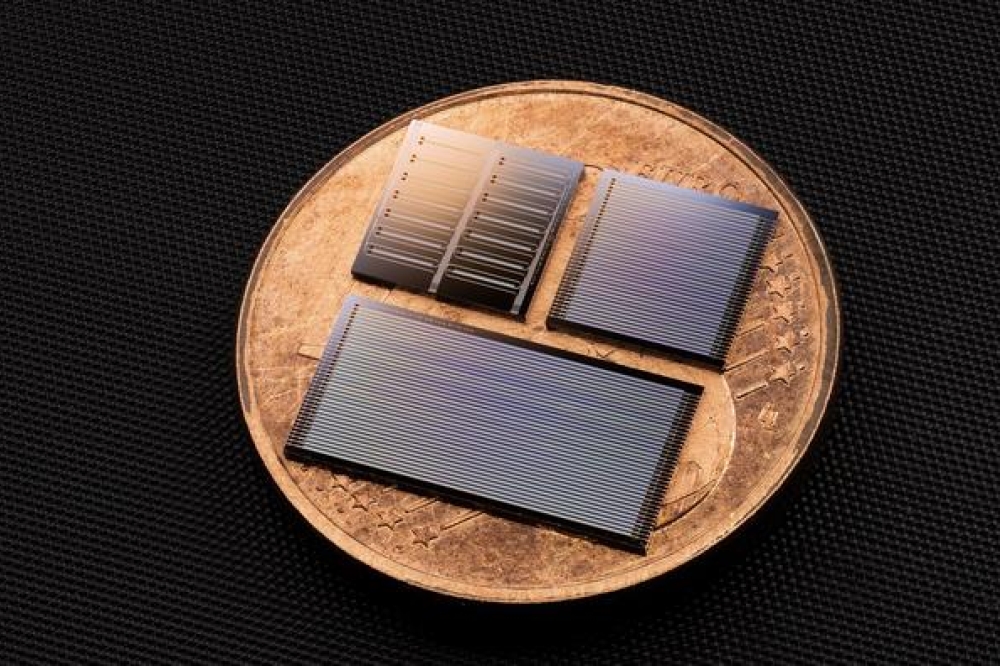
With the rapid development of the Internet of Things, artificial intelligence, and big data technology, lithium tantalate (LiTaO3) has been widely used in digital signal processing, 5G communications, guidance, infrared detectors and other fields due to its excellent properties such as piezoelectricity, acousto-optics, and electro-optics. Its single crystal film is considered to be a new material urgently needed for the development of new devices in the post-Moore era.
Lithium tantalate is a multifunctional crystal material with excellent performance. It has an ilmenite structure and is colorless or light yellow. Its crystal raw materials are abundant, its performance is stable, and it is easy to process. It can produce high-quality, large-size single crystals. Polished lithium tantalate crystals can be widely used in the manufacture of electronic communication devices such as resonators, surface filters, and transducers. It is an indispensable functional material in many high-end communication fields such as mobile phones, satellite communications, and aerospace.
Main Applications
Surface Acoustic Wave (SAW) Filter
Surface acoustic wave filter is a special filtering device made by using the piezoelectric effect of piezoelectric crystal oscillator materials and the physical characteristics of surface acoustic wave propagation. It has the advantages of low transmission loss, high reliability, large manufacturing flexibility, analog/digital compatibility, and excellent frequency selection characteristics. Its main components include transmission line, piezoelectric crystal and attenuator. When the signal reaches the surface of the piezoelectric crystal through the transmission line, surface acoustic waves will be generated. The speed of surface acoustic waves of different frequencies is different during propagation. By reasonably designing the geometric shape and transmission parameters of the piezoelectric crystal and the interdigital transducer and the existence of the reflector, filtering effects of different frequencies can be achieved.
Crystal Oscillator
A crystal oscillator is an energy conversion device that converts direct current into alternating current with a certain frequency. It mainly uses the piezoelectric effect of piezoelectric crystals to generate stable electrical oscillations. When voltage is applied to the two poles of the chip, the crystal will deform, thereby generating voltage on the metal sheet. Crystal oscillators are widely used in communication radio stations, GPS, satellite communications, remote control mobile devices, mobile phone transmitters, and high-end frequency counters because of their highly stable frequency AC signals. It usually uses crystals that can convert electrical energy and mechanical energy to provide stable and accurate single-frequency oscillations. Currently, commonly used crystal materials include quartz semiconductor materials and lithium tantalate chips.
Pyroelectric detector
A pyroelectric detector is a sensor that uses the pyroelectric effect to detect temperature changes or infrared radiation. It can detect the energy changes of the target in a non-contact form, thereby generating a measurable electrical signal. Its core component is a pyroelectric chip, a single crystal material with special properties, usually composed of units with opposite charges, with crystal axes and spontaneous polarization. Pyroelectric materials need to be prepared very thin, and electrodes are plated on the surface perpendicular to the crystal axis. The upper surface electrode needs to be plated with an absorption layer before it can be used. When infrared radiation reaches the absorption layer, the pyroelectric chip will be heated and a surface electrode will be generated; if the radiation is interrupted, a reverse polarization charge will be generated.
Lithium tantalate has broad application prospects in 5G communications, photonic chips, quantum information and other fields due to its large pyroelectric coefficient, high Curie temperature, small dielectric loss factor, low thermal melting point per unit volume, small relative dielectric constant and stable performance.

